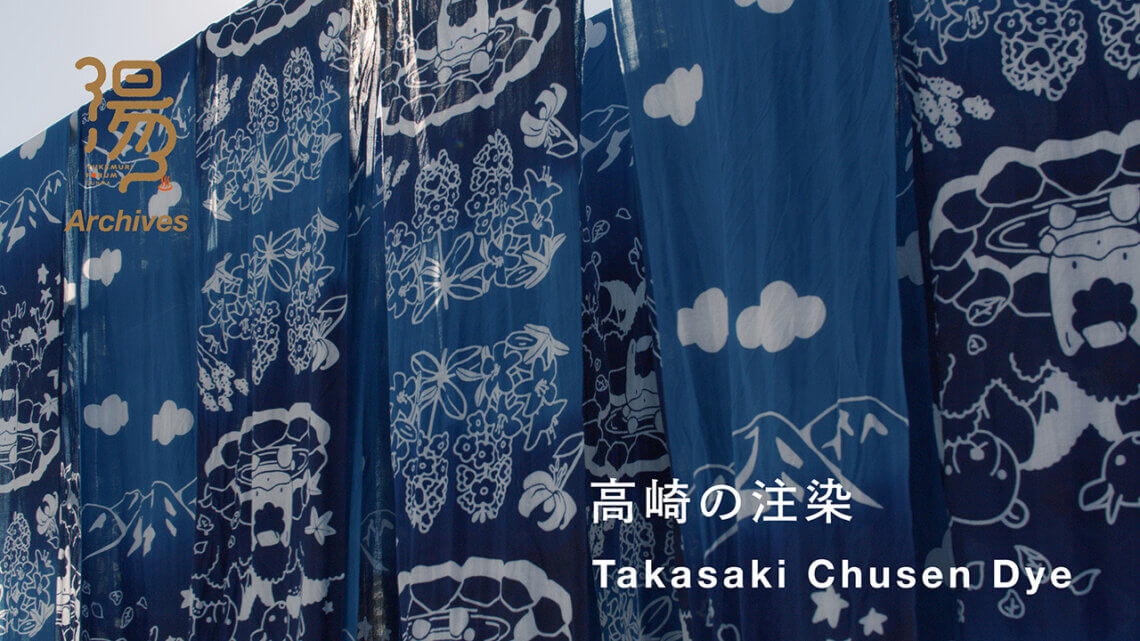- ARCHIVE
【湯けむりアーカイブス】県内唯一の伝統工芸、高崎の注染
シリーズ『湯けむりアーカイブス』では、群馬県内各地に根付く固有の文化や伝統、産業などを見つめ直し、地域の求心力であるその価値を丹念に紐解いて記録。未来へとつなげます。
ーーー
高崎市の中村染工場は、群馬県で唯一、日本でも数少ない「注染(ちゅうせん)」という伝統的な技法で手拭いを生産しています。四代目・中村純也さんの手による表裏のないきれいな染めと、色合いや輪郭にでる独特の味わいが特徴です
Nakamura Dyeing Factory in Takasaki is the only place in Gunma and one of only a few in Japan that dyes cotton hand towels (tenugui) in the traditional Chusen style. Junya Nakumura, a fourth-generation artisan, produces towels that are beautifully dyed, both front and back, in distinctive colors and clear-cut designs.
肌にふれるとさらっと心地よく、汗や水をしっかり吸収してくれます。洗濯すればすぐ乾き、使い込むごとに柔らかくなる。毎日の暮らしの中で持ち歩きながらその良さが感じられる群馬の伝統工芸品です。
The tenugui are soft to the touch and feel good on the skin, perfect for wiping away water and sweat. The more they are used and washed, the better they feel, making them a traditional Gunma handicraft that becomes a part of daily life.
ーーー
<注染の工程>
1.糊置き:生地の上に型枠を下ろし、1枚ずつヘラで均等に糊付けする。
2.注染:薬缶(やかん)で染料を注ぎ、真空ポンプを使い下から吸引する。
3.水洗:たっぷりの流水で余分な染料と糊を丹念に洗い流す。
4.乾燥:脱水した生地を干して天日で乾燥させる。
5.仕上げ:反物状に丁寧に巻き取ったあと、プレスして手拭い1枚の長さに切り分ける 。
<The Chusen Dying Process>
1.Lower the stencil onto a towel-sized section of a roll of cloth, and evenly brush on starch over it.
2.After an entire roll of cloth has had the stencil applied, dye is poured onto it with a yakan. A suction pump retrieves the dye from below.
3.Running water is used to carefully remove all the starch and extra dye
4.After wringing it out, cloth is dried in the sun.
5.Cloth is rolled up, then pressed before cutting into single tenugui towels.
